Tracking performance check on Yuri's VMC production
In effort of pursuing to set up the HFT embedding infrastructure, Yuri did some development using VMC geometry. These are some first cosmic ray samples produced:
/star/subsys/tpc/fisyak/reco/2016/Cosmics/RFIdeal/
/star/subsys/tpc/fisyak/reco/2016/Cosmics/RF/
/star/subsys/tpc/fisyak/reco/2016/Cosmics/ZFIdeal/
/star/subsys/tpc/fisyak/reco/2016/Cosmics/ZF/
*Note: 5/31
Two new directories from Yuri were checked:
/star/subsys/tpc/fisyak/reco/2016/Cosmics/ZF9/
/star/subsys/tpc/fisyak/reco/2016/Cosmics/RF9/
I took a look at the tracking performance using the HftMatchTree generated using the following production
"y2016,in,StEvent,mysql,libPhysics,db,StarMagField,MagF,NewTpcAlignment,pxlDb,istDb,sstDb,HftMatTree,nodefaul"
Here are the findins:
1) Hits position distributions
| RF | ZF | |
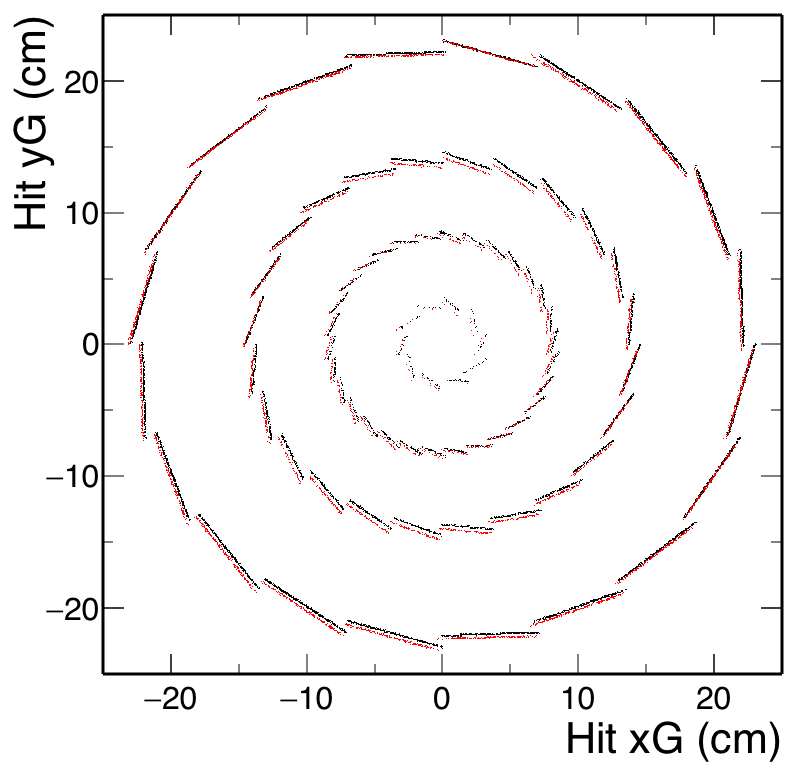 |
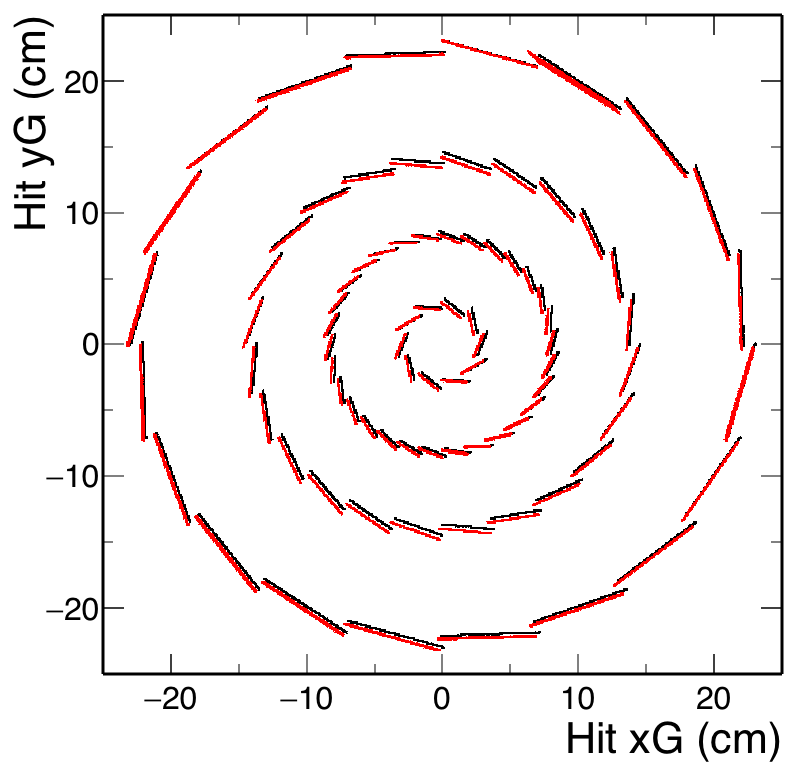 |
black: ideal geometry; red: mis-aligned geometry
2) NHits distributions
NHits = nTpcHits + 100*nSstHits + 1000*nIstHits + 10000*nPxl2Hits + 100000*nPxl1Hits.
| RF | ZF | |
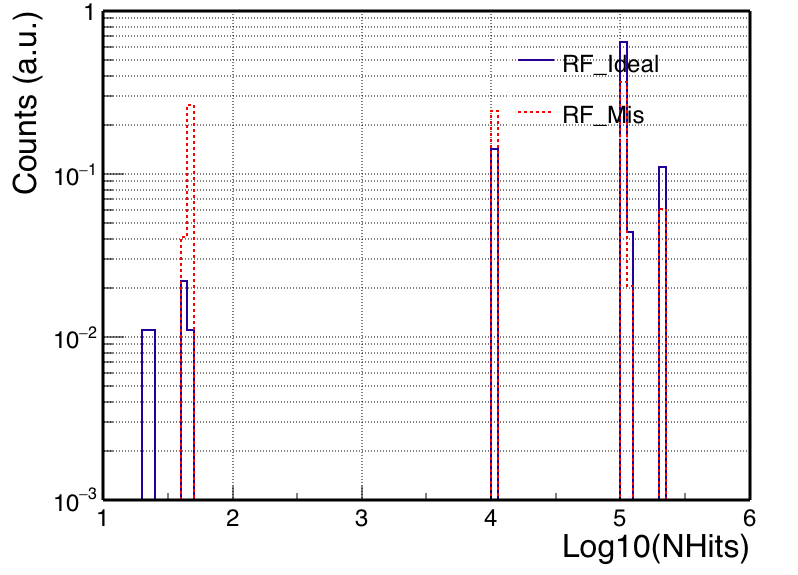 |
 |
3) HFT efficiency
definition: HFT track: hasPxl1Hits && hasPxl2Hits && (hasIstHits || hasSstHits)
| Ideal geometry - 74.7% | MisAligned - 34.7% | |
| RF | 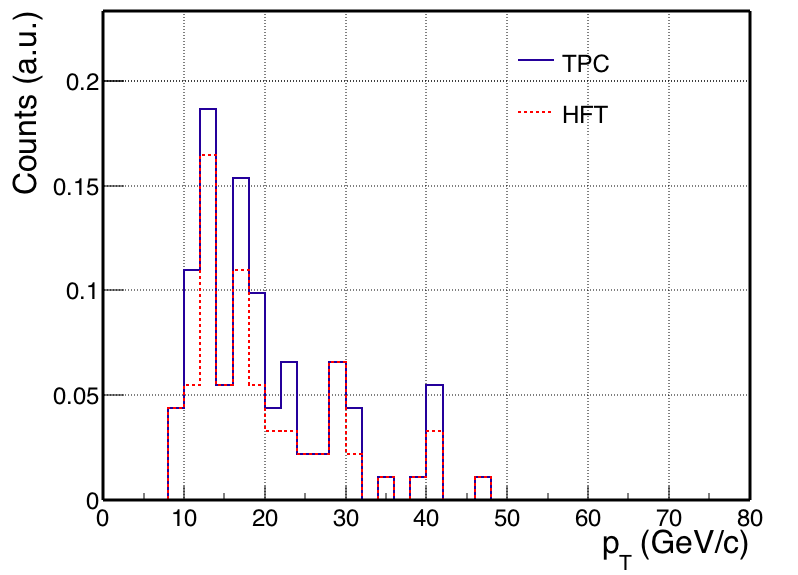 |
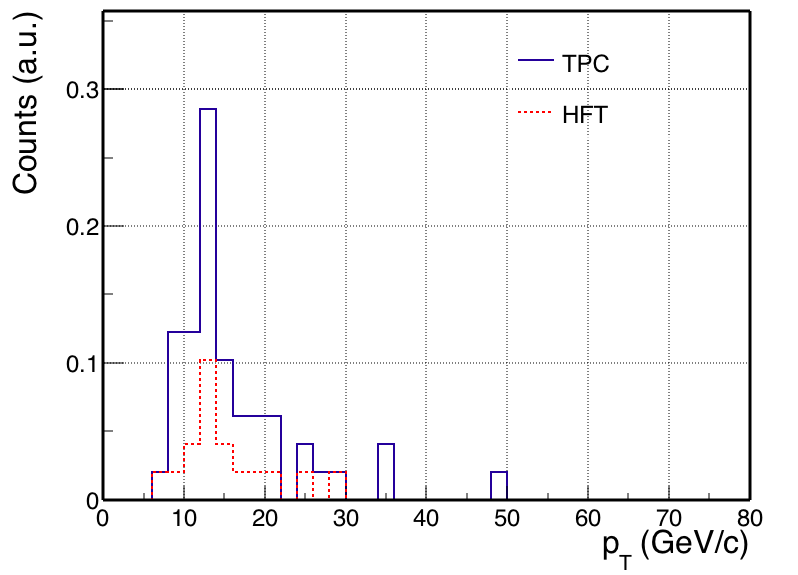 |
| Mis-aligned -RF9 - 42.9% | ||
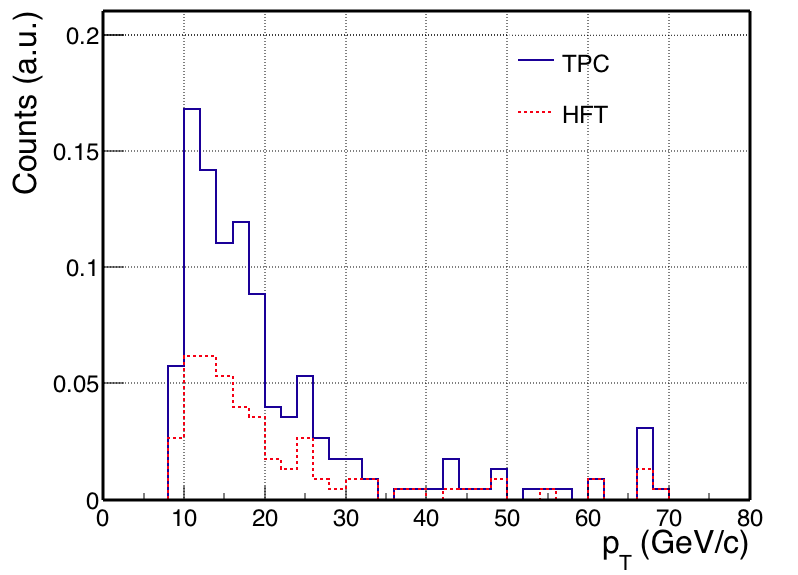 |
| Ideal geometry - 3.4% | MisAligned - 2.3% | |
| ZF | 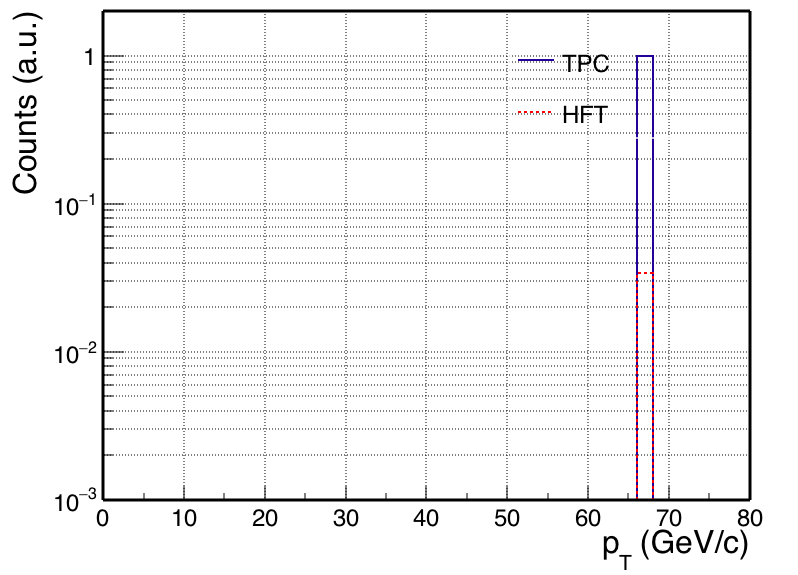 |
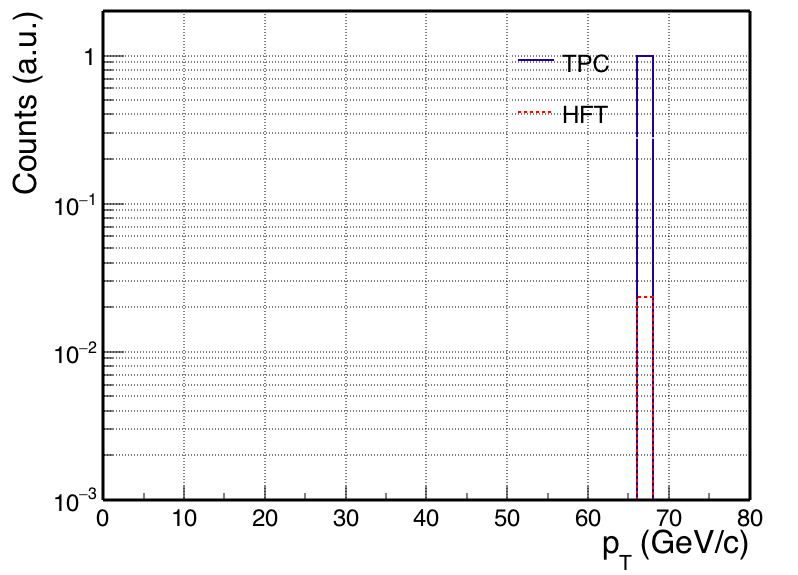 |
| Mis-aligned - ZF9 - 2.1% | ||
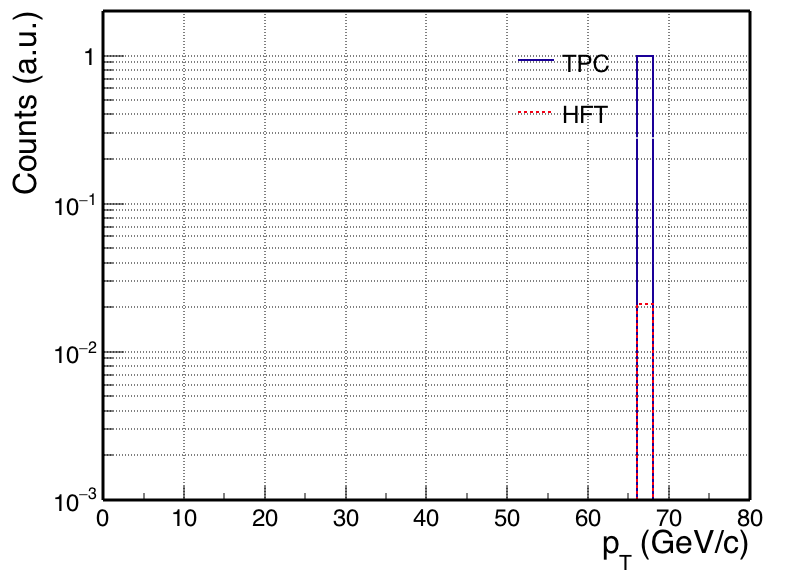 |
Update May 31:
Yuri discovered that there is an inconsistency between TGeo geometry and Db geometry in the ideal simulation case for 2015/2016 runs. It has been confirmed that this is due to PXL ladder geometry was changed in 2015 because of the cable thickness was changed from 90microns (Cu) to 110 microns (Al). This leads to a 20 micron difference in the PXL active volume position is shifted up to 20 micron in the ladder local frame. While in Db, the same 2014 (Cu-cable) parameters were used for 2015/2016 runs.
To look at the geometry position in detail, I am using the PXL alignment method. Taking the ZF cosmic ray data, and take two hits in two layers of one PXL half barrel, project with straight lines to the opposite half barrel of the PXL, and look at the residual of the hit positions w.r.t to the project positions.
In the follow table, each cell contains a set of 3x4 residual plots. In each of this 3x4 plot,
- scattered dots are the 2D distributions, and red markers are the mean values from ::FitSlicesY() method. The blue dashed line is the zero line for comparison.
- column 1, 2, 3 correspond to delta_X, delta_Y, delta_Z vs Z respectively.
- first two rows are for global coordinates, last two rows are for local coordinates (but only using the ideal geometry, so not meaningful when having the mis-aligned geometry)
- In each of the two rows, the first row is always for the case by taking hits directly from the output event.root files. In the second row, I did a movement of all PXL hits by 20 microns in ideal local frame and then re-calculate the projection and residuals.
Findings:
1) The residuals have some offsets when taking the hit positions from the output event.root files directly for Ideal and Mis cases. Particularly in the ideal local frame case, the delta_Y is exactly 20 micron offset from zero. When I manually moved the hit positions by 20 microns (in local frame Y direction), all residuals look very consistent with zero now.
2) In the ZF9_Mis case, it seems the residuals using the hits from the event.root files directly are good while the manual movement distorted the residuals. Yuri, so have you done some tweaks already in this sample?
| Residual on PXL Inner | Residual on PXL Outer | |
| Ideal |  |
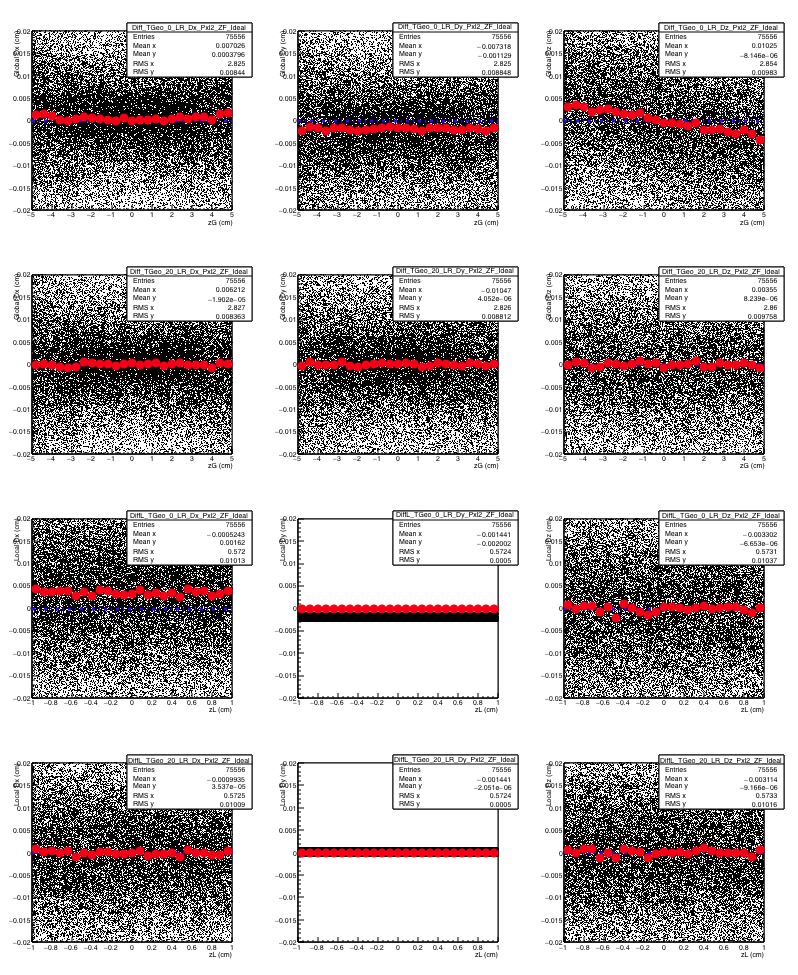 |
| Mis |  |
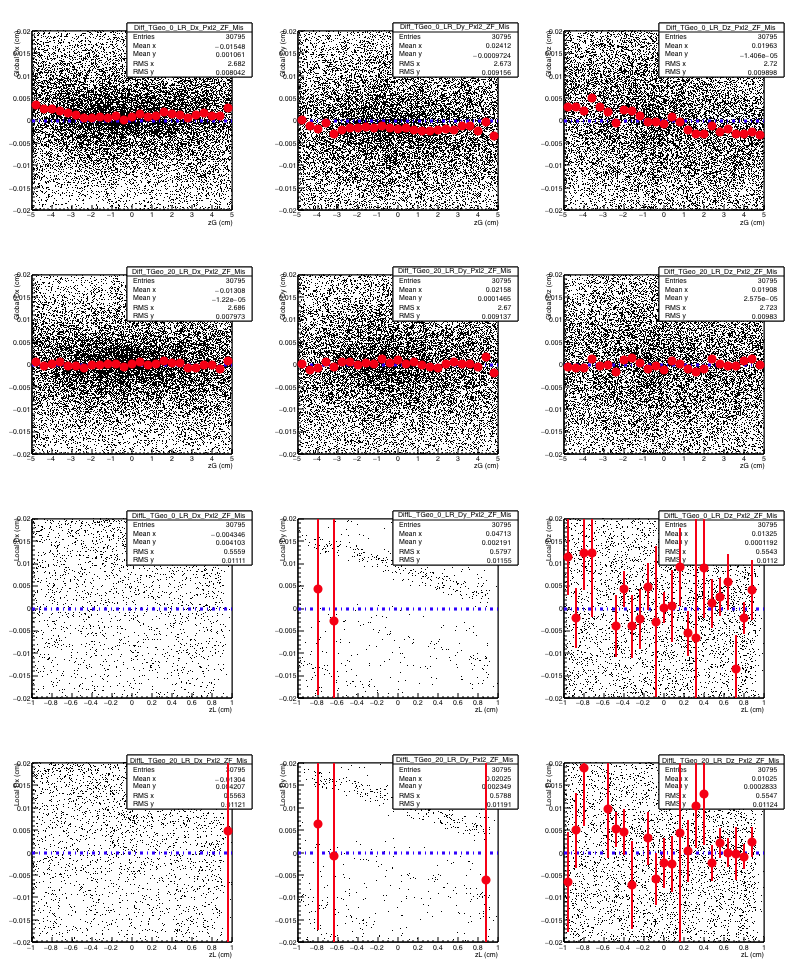 |
| Mis (ZF9) |
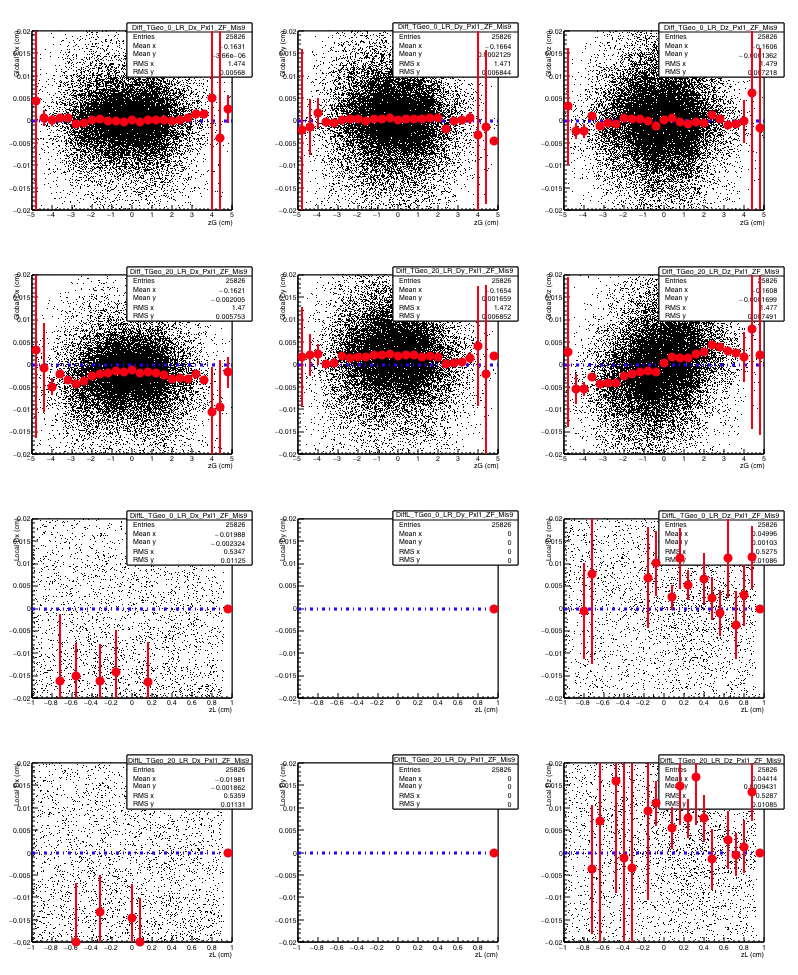 |
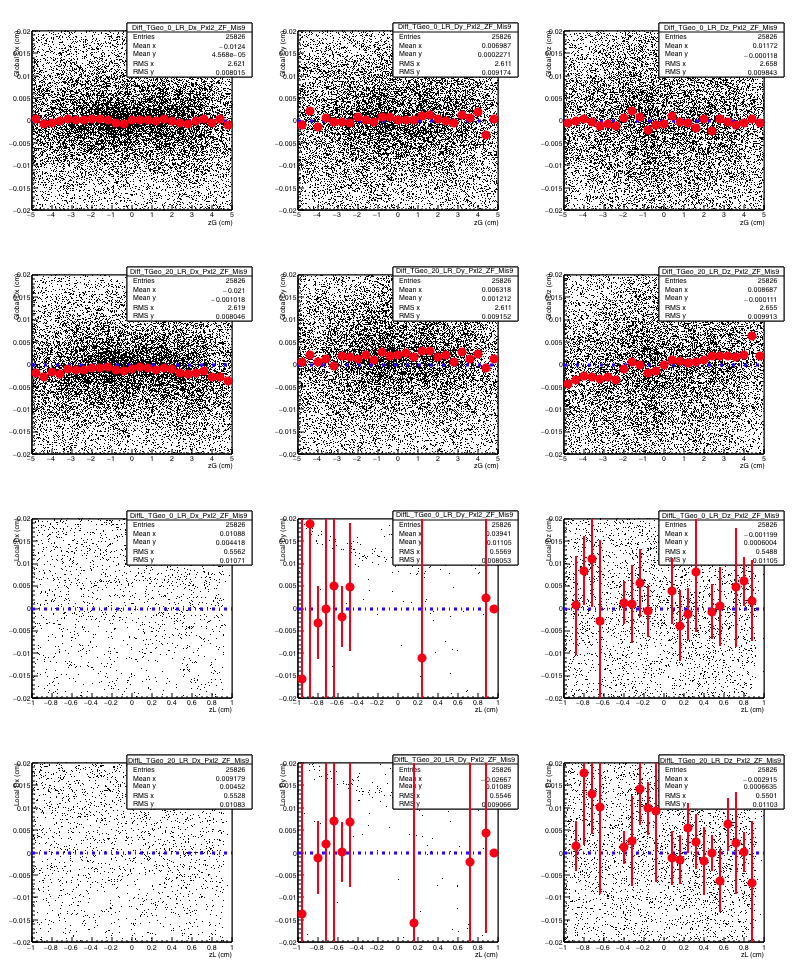 |
Update on June 2nd.
| IST | SSD | |
| Ideal | .png) |
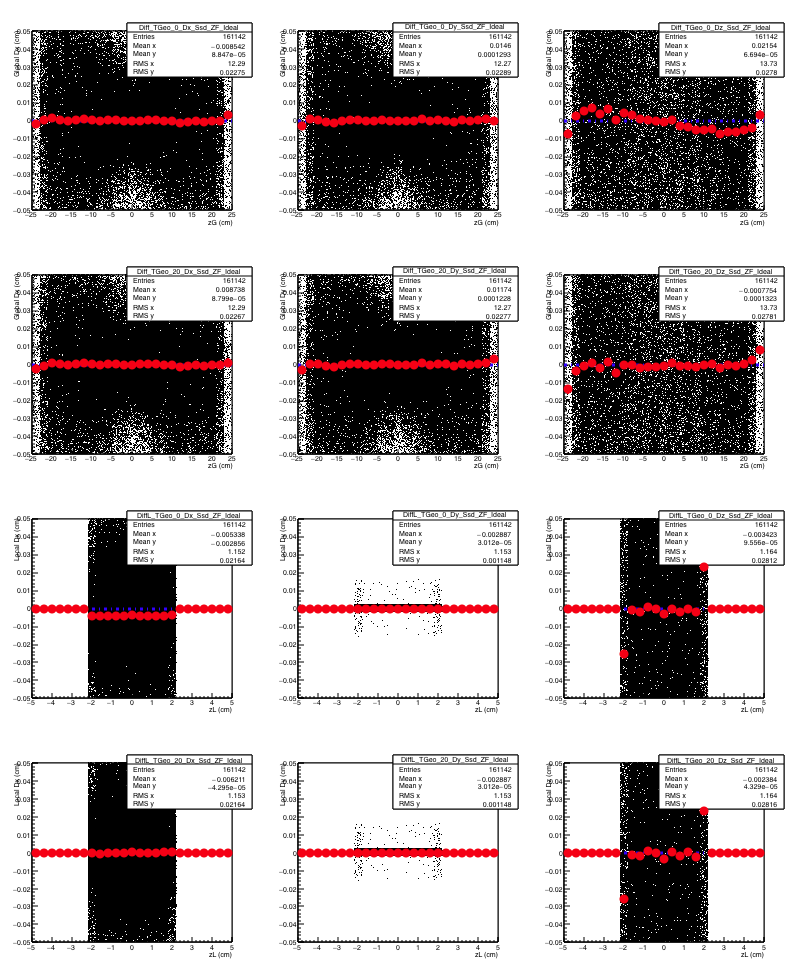 |
| Mis | 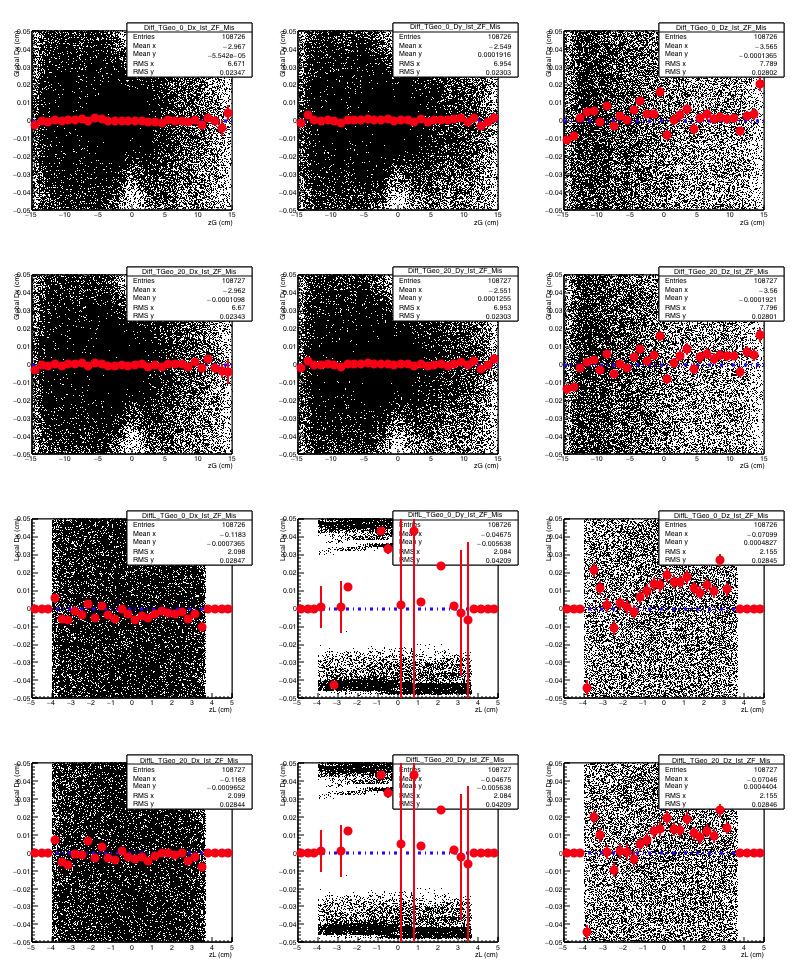 |
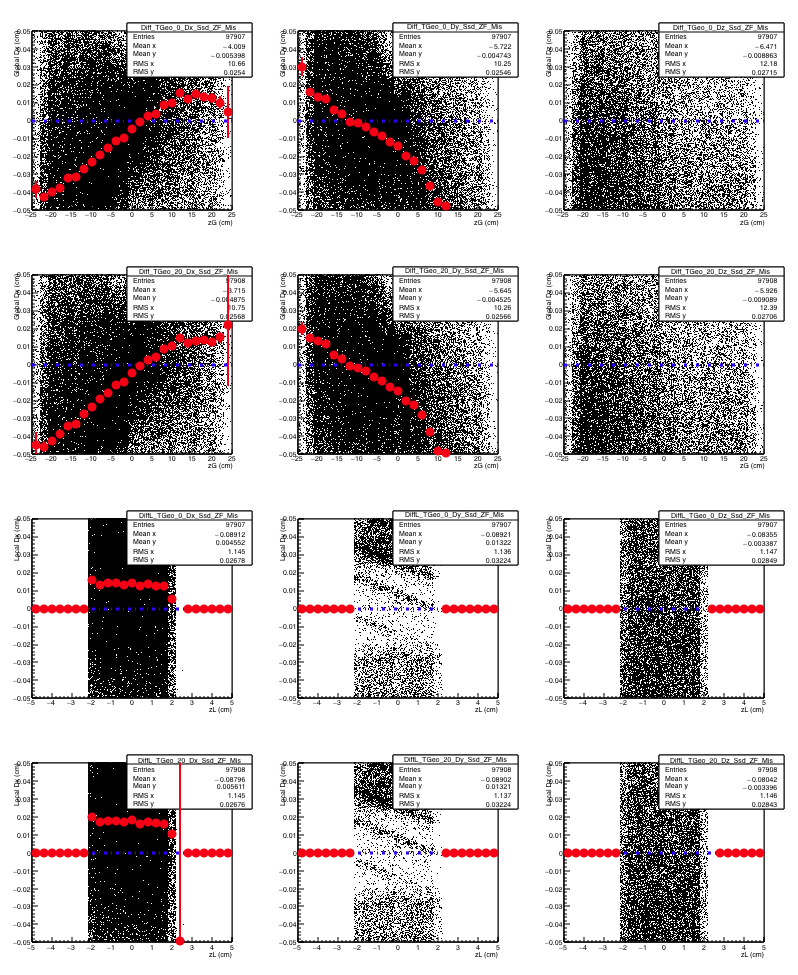 |
| Mis (ZF9) |
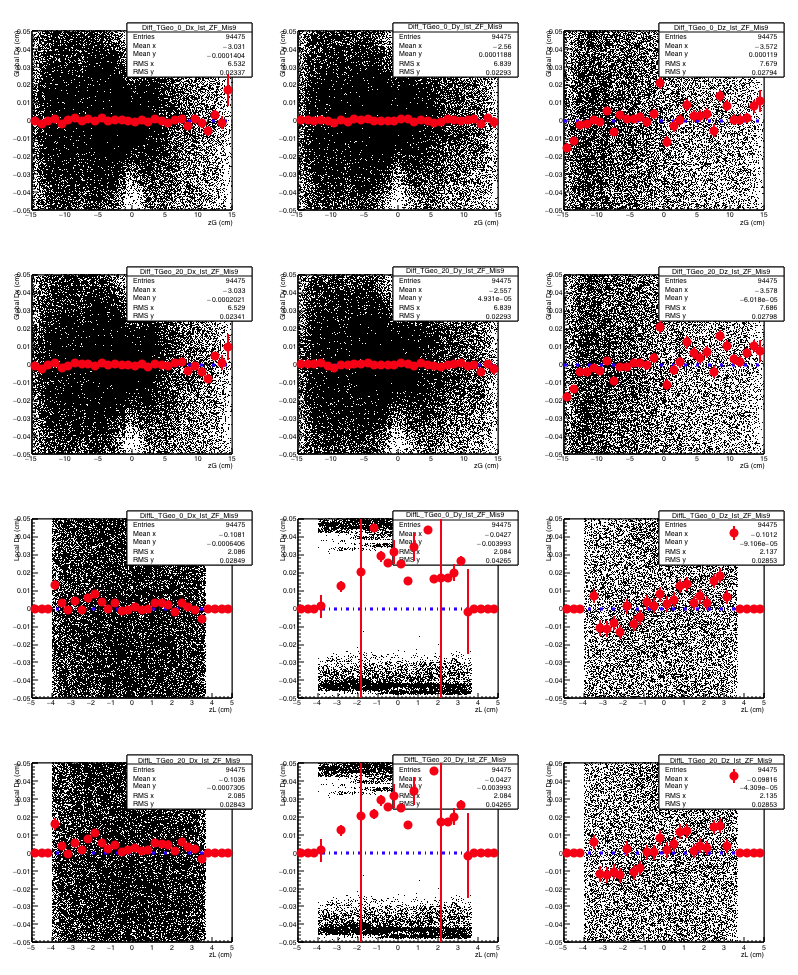 |
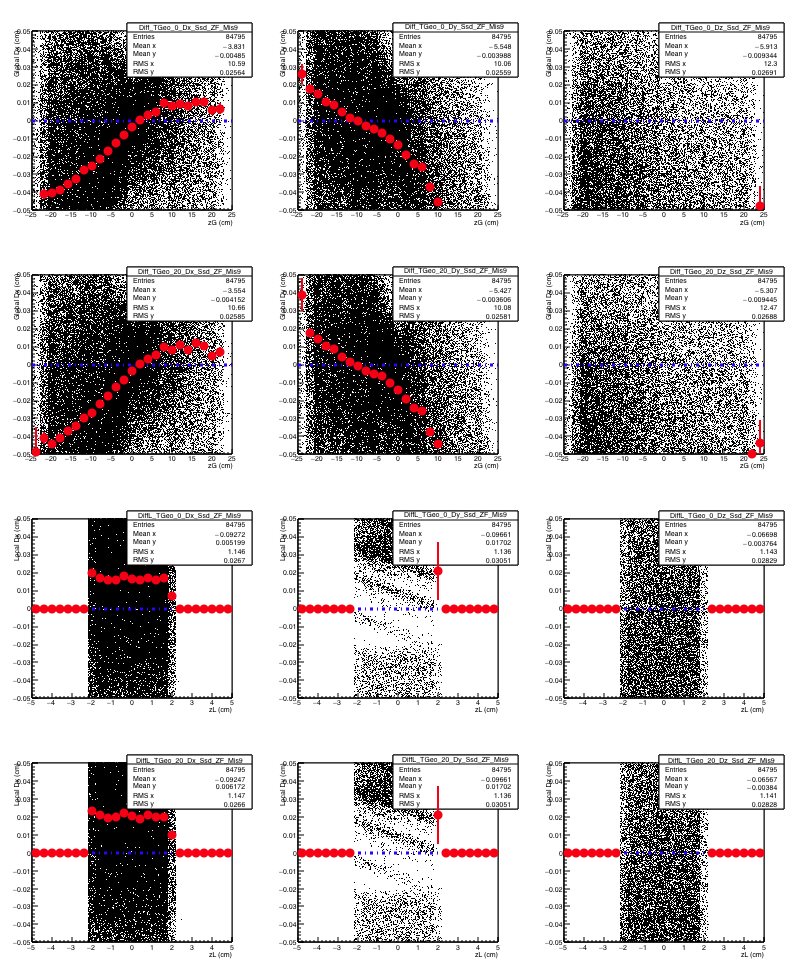 |
Normal.dotm
0
0
1
28
160
Lawrence Berkeley National Lab
1
1
196
12.0
0
false
18 pt
18 pt
0
0
false
false
false
/* Style Definitions */
table.MsoNormalTable
{mso-style-name:"Table Normal";
mso-tstyle-rowband-size:0;
mso-tstyle-colband-size:0;
mso-style-noshow:yes;
mso-style-parent:"";
mso-padding-alt:0in 5.4pt 0in 5.4pt;
mso-para-margin-top:0in;
mso-para-margin-right:0in;
mso-para-margin-bottom:10.0pt;
mso-para-margin-left:0in;
mso-pagination:widow-orphan;
font-size:12.0pt;
font-family:"Times New Roman";
mso-ascii-font-family:Cambria;
mso-ascii-theme-font:minor-latin;
mso-fareast-font-family:"Times New Roman";
mso-fareast-theme-font:minor-fareast;
mso-hansi-font-family:Cambria;
mso-hansi-theme-font:minor-latin;}
- dongx's blog
- Login or register to post comments
